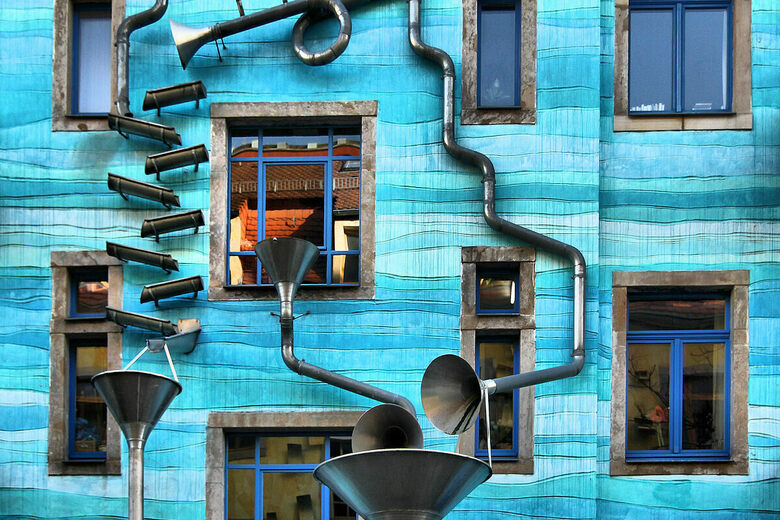In case you haven’t heard, last year a new instrument hit the music scene, and it’s huge. In fact, it’s the Golden Gate Bridge. And it has recently been featured in duets with a guitarist from Los Angeles named Nate Mercereau.
Yes, it turns out that architecture can actually be pretty darn musical. How, you ask?
Well, in this case it happened when a new railing was installed. Intended to be more aerodynamic, the railing also turned out to cause a humming noise during high winds. At 440 hertz, the hum matches an A note, and Mercereau is taking advantage of the opportunity to perform with what’s essentially the world’s largest woodwind instrument.
Lest you think this is the first time architecture has gone from functional to musical, read on.
In 1999, a sculptor and two designers who all lived in the same building in Dresden, Germany, decided to alter the structure so that it would make music. The sculptor, Annette Paul, was inspired by the sound that rain made when it struck the windows of her house while she was growing up in Russia. The two designers, Christoph Rossner and André Tempel, teamed up with her to create and install a series of metal pipes, funnels, and spouts that enhance nature’s music. Now it’s a frequently visited tourist spot.
In 2008, David Byrne transformed the Battery Maritime Building in New York into a gigantic instrument that anyone can play. The building was formerly a defunct ferry terminal. Byrne installed an antique organ and connected it to various structures within the building, such as beams and plumbing. There are no speakers, no microphones, and no electronics. Byrne felt New Yorkers would find the concept of noisy buildings familiar. He told NPR, “If they’ve ever lived in an apartment with radiators, they’ll be familiar with noises that start usually at night or early in the morning.”
So the next time your house makes an odd noise, try not to be irritated. Maybe it’s just singing to you.

